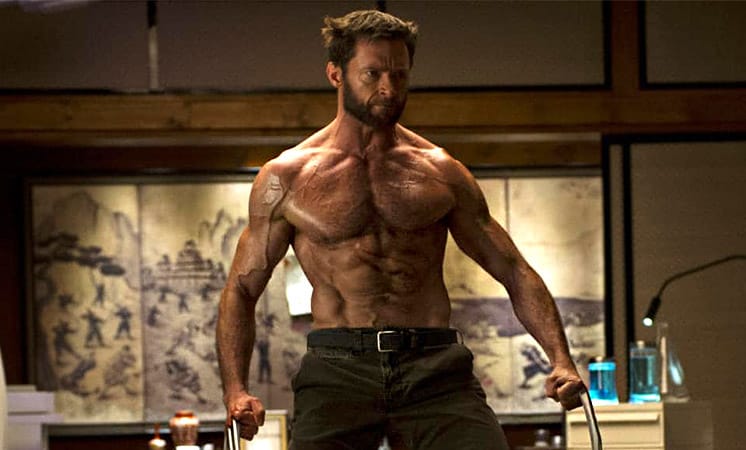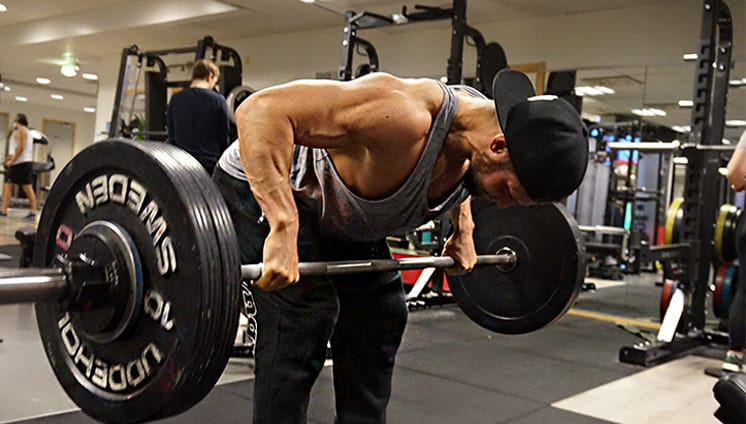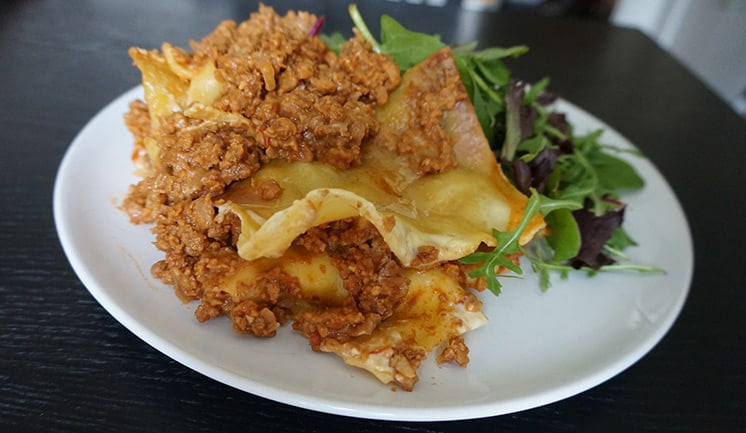
Most people know that progressive overload is the main driver of muscle growth. I.e. if you lift more weights in the gym overtime, you will get bigger and more muscular.
But, what’s the case when cutting? Should you think about progressive overload then as well?
Should you train for progressive overload when cutting? Yes, you should always train for progressive overload, even when cutting. Sure, you’ll likely not be able to build muscle and strength nearly as quickly when you’re cutting, but if your intention is to do so, you’ll get better results than what you would if you were to take it softer on your training.
In this post I’ll answer more in depth why progressive overload is important when cutting, why you should adopt something I like to call the “warrior mindset” and finally how you should set up your training and diet to easier allow for progressive overload during your cutting phase.
Table of Contents
Why Striving For Progressive Overload is Important When Cutting
One of the most common statements I hear from people who have just started cutting is this:
“I’m going to start training lighter to feel the burn now that I’m cutting”
Big mistake!
Taking it easier on your training when you start cutting by striving away from progressive overload training is a bad idea.
The fact is that, doing so will lead to muscle loss. You see, when you’re cutting, your body will only hold on to the tissue it deems is most necessary (body fat), this means that the signals you send your body via your muscle building training needs to be even stronger and clearer.
When you take away the most important factor for growth, i.e. calories, you must provide your body with a reason big enough to still build muscle mass.
Now, even though muscle growth will be reduced significantly and that at some point you’ll only be able to maintain your muscle mass when cutting, in order to get the best results you should always train with the intention that you will achieve progressive overload.
If you can do this, you will be able to hit occasional PRs even when cutting, which will leave you with a hard, ripped and aesthetic looking physique once your cut is over.
The Warrior Mindset
To be able to hit PRs when cutting you should adopt something called the warrior mindset that I learned about from Greg over at Kinobody
This where you believe deep down that no matter what the circumstances are, you will still crush the obstacles coming your way.
When dialed in on the mindset of a warrior you don’t focus on the calorie deficit when you’re stepping into the gym, no you focus on the fact that you’re going to crush the weights no matter what. This mindset has helped me countless times to make PRs even when I’m cutting.
And if you can make small PRs consistently, even how small they seem, over the span of 8-12 weeks you will be able to build decent amounts of muscle even though you are cutting.
So, forget about the fact that you are cutting and go in to the gym with determination. Let the warrior in you come out!
Be like wolverine:

What Makes Muscle Grow?
Before moving on, let’s take a brief look at why it’s possible to gain muscle when cutting by understanding what makes muscle grow in the first place. I think it can be helpful for beginners to first understand the causes of muscle growth. This section will explain why they probably shouldn’t train like their favorite youtuber or fitness model when cutting.
Even though the causes of muscle growth aren’t yet completely understood, we do have about 90% of the picture. Brad Schoenfeld came out with a paper where he stated that the three causes of muscle growth are:
- Progressive tension overload (lifting heavier weights over time)
- Metabolic fatigue (pushing a muscle to its metabolic limit via the use of high reps)
- Muscle damage (micro-tears of muscle fibers that required recovery)
Out of the three, progressive tension overload has the most profound effect (by far). So although you can stimulate growth through both metabolic fatigue and muscle damage, if you’re not progressively lifting heavier and heavier weight you’re not going to grow very well.
Muscle Growth When Cutting
Muscle growth takes place in the same way when you’re cutting as it does when you’re eating at maintenance or when you’re bulking. The only difference is that during a cutting phase you have less nutrition available to allow the growth to take place.
Nutrient availability is the reason you gain muscle faster during a bulk than during a cut, even when using the same workout routine. From the total amount of nutrients we eat our bodies must get:
- The energy needed to maintain life (breathing, body temperature, pumping blood, etc.)
- The energy expended during daily activities (any type of movements outside of training)
- The energy expended during training
- The nutrients necessary for recovery
- The nutrients necessary for growth
So, as you might realize, it’s difficult to cover all 5 points when consuming fewer calories than what your body burns. Usually by the time you get to number 4 or 5 you’ve used up all the available energy.
That’s completely the opposite of what happens when you’re bulking. When you’re in a calorie surplus you’re consistently eating enough calories to cover the energy cost of living, exercise, recovery, and muscle growth.
With this said though, there are certain training and dieting strategies that we can use to allow for as much progressive overload as possible even when we’re cutting. So, I want to cover a few of these strategies below:
How to Set up Your Training When Cutting

To have the biggest chance of achieving progressive overload when cutting you must train in a very effective and efficient way to produce as much stimulus for growth as possible without overtaxing your ability to recovery.
Managing recovery is the most important task you have when cutting. If you’re not able to recover you won’t make strength gains, which won’t lead to muscle growth. In fact, if you stay unable to recover for long, you’ll start losing muscle.
I’ve written more about how to train when cutting in this guide. But in short here’s what to do:
1. Train 3 Times Per Week
This is key, using a training split that will have you train three times per week is going to give you the perfect balance between getting in enough training volume and frequency, while still allowing for a great deal of recovery in-between sessions.
When it comes to achieving progressive overload when cutting the thing that will make or break your physique will be your work to rest ratio. You see, training breaks down your muscles, which then forces your body to build the muscles up during your recovery time.
If you train to much or to often while trying to gain strength and muscle while cutting, then your body will likely only be able to recover, and not recover PLUS adapt.
2. Train With Compound Exercises
Using compound lifts, especially when cutting, is an extremely effective way to provide a ton of stimulus to your muscles without having to do a ton of different exercises and sets.
The less total work you can get away with while cutting, the bigger your cahnces will be to achieve progressive overload and bigger muscles further down the line.
3. Train in The 4-10 Rep Range
Using the 4-10 rep range has been shown to provide the most effective stimulus (high tension) on your muscles. By staying within this range you will achieve more by doing less, especially in combination with compound exercises.
If you were to use a rep range higher than this, then you would drastically increase the recovery demands of your muscles. This would in all likelihood lead to a plateau in your pursuit of progressive overload.
4. Do Reverse Pyramid Training
When cutting you should focus more on intensity (the weight on the bar and going close to failure) rather than volume (the total amount of training you do). This is because you need to be able to recover. If you do a lot of volume you won’t recover well and hence that feel bad and start losing muscle mass.
The best training style that focuses on intensity and strength above volume is Reverse Pyramid Training. If you want to learn more about this way to train you should check out this post after you’re done reading this one.
5. Take it Easy on The Cardio
Even though cardio can be great for increased calorie burn, it do so on the expense of recovery. Cardio will break down your musculature which requires energy for recovery.
What’s negative about this is that cardio won’t promote gains in strength and muscle growth since it activates a completely different cellular pathway. So, by doing cardio you’re essentially stealing energy that could go towards recovering your strength training.
In other words, your progressive overload will slow down if you’re doing too much cardio. For this reason, your calorie deficit should be determined by your diet and not your training.
How to Set up Your Diet When Cutting

How you choose to set up your diet when cutting also have a huge influence on your ability to achieve progress in the gym.
To be able to achieve progressive overload when cutting here’s what you should do with your diet:
1. Use a Moderate Calorie Deficit
The size of your calorie deficit is, by far, the biggest factor influencing your progress in the gym. If you’re eating too little you’ll reach a plateau in your lifting, and then start declining fairly soon. If on the other hand you’re eating too close to maintenance, your results will be slow and cutting will simply become unnecessary.
I think that for most people, a calorie deficit that’s ~500 below maintenance is a good number to aim for on average.
You could however choose to base your calorie deficit on your body fat percentage as this will further ensure that you’re not having a too large or too small calorie deficit. You can read more about setting up such a deficit here.
2. Have a Moderate to High Protein Intake
When it comes to the diet, protein is the second most important factor behind calories. A high protein intake has consistently been shown in research to help build muscle when cutting.
However, the protein intake has been highly exaggerated in the fitness industry. It’s not uncommon that people recommend that you should eat 1.5-2 grams per pound (3-4 g per kg) of body weight, which is simply just unnecessary and potentially even negative for strength gains.
I’ve found that a protein intake of 0.8-1 gram per pound (1.8-2 grams per kg) of body weight works the best for increasing strength while cutting (as long as the calorie deficit isn’t too big).
The reason why this slightly lower protein intake works so well is because it leaves more room for carbs which will drastically improve your training performance in the gym.
3. Eat Enough Vegetables
Eating enough vegetables is important when cutting. A wholesome nutrient dense diet will lead to better micronutrient and fiber uptake.
When you’re cutting you’re taking in less total food which means that it’s harder to get all the vitamins, minerals and fibers that you need to feel and perform your best.
Does this mean that you can’t eat any “junk” or tasty stuff at all? Of course not, that wouldn’t be very enjoyable. Just make sure that the majority of your food is coming from wholesome nutrient dense sources.
Personally I follow the 80/20 rule and it works incredibly well. This is where I make sure that 80% of my diet come from nutritious foods. Then once that’s covered the remaining 20% can come from junk foods.
Sometimes a multivitamin can be useful when cutting, espeically if you know that you’re not getting in enough vegetables. Just remember though that a multivitamin supplement can’t completely supplement a wholesome diet, simply becuase it lacks a ton of other phytonutrients and antioxidatns found in vegetables.
Here’s a video explaining much more in depth how to maintain muscle while cutting:
What’s Next?
There we go, striving for progressive overload when cutting is not only possible, it should also be your goal!
Sure, as you’re getting leaner building strength while in a calorie deficit will be increasingly more difficult, but this doesn’t mean that you shouldn’t try. If you adopt the mindset of a warrior where you do your BEST to gain strength when you go to the gym, the better you’ll look once your cut is over.
Further, making sure that you have well set up training and dieting strategies is incredibly important for maximizing progressive overload when cutting.
I learned about most of these strategies when I was going through Radu’s ShredSmart Program. If you want a step by step guide towards building your physique, then I definitely recommend his course as it helped me immensely when I finally decided to get my hands on it.
You can read more about why I recommend his course here.
